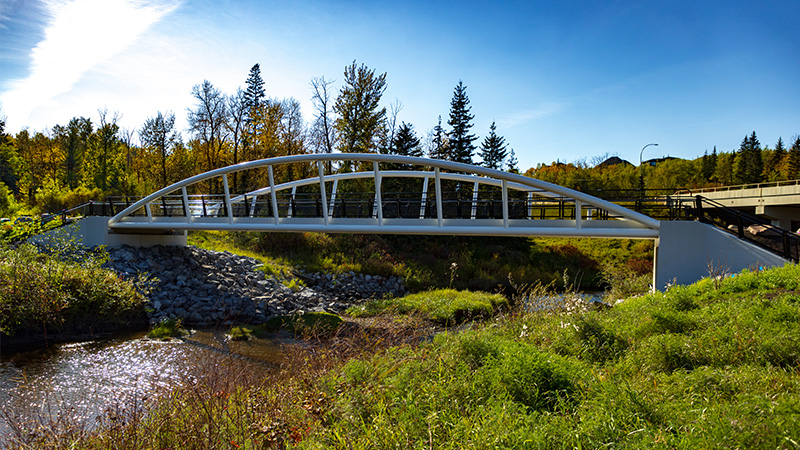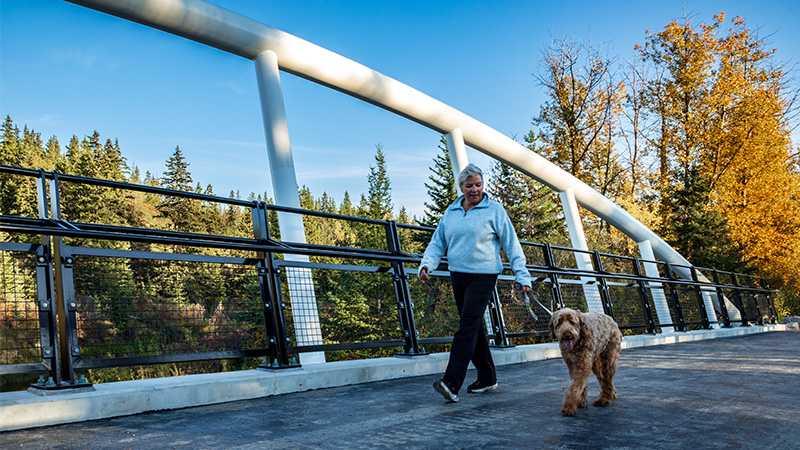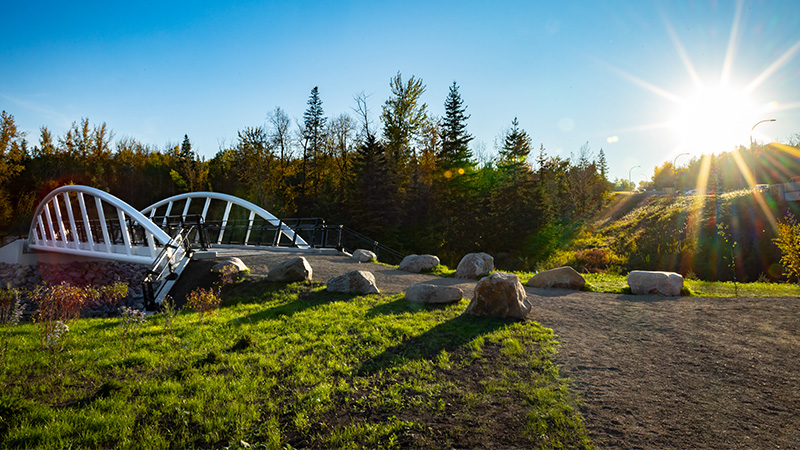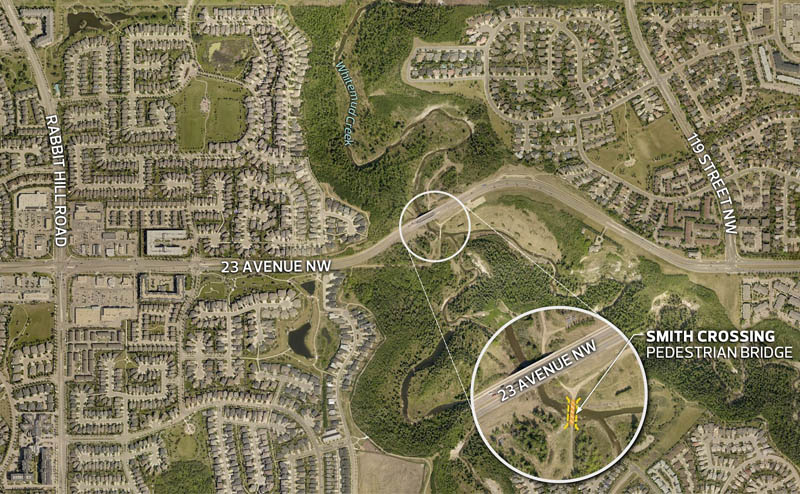Stakeholder and public engagement has been ongoing since the start of this project. Identified external stakeholders, such as community leagues, recreation groups and environmental groups, were sent a letter introducing the project.
This letter also invited stakeholders to a one-on-one virtual meeting with the project team to capture information regarding the bridge experience, local knowledge about the site, preferred bridge experience, and comments about the environment as per the requirements of the River Valley Bylaw 7188.
An online public survey captured additional information on the same topics.
What We Heard
Findings from the public survey have been compiled in a What We Heard Report. The key themes about the bridge and site were:
-
Keep the bridge in the same location
-
The bridge must fit into the site (size, location, aesthetics), complement the natural site, and be a similar width
-
The historic character of the bridge is important
-
Construction impacts to the natural environment must be minimized
-
Connections to adjacent neighbourhoods are important
-
Year round access to the creek is important (including kayaking, canoeing)
-
Some additional amenities, such as interpretive signage and seating, were identified as desirable
-
Many wildlife sightings occur around the bridge and include a variety of species including but not limited to: squirrels, beaver, deer, muskrat, moose, rabbits, and numerous birds
-
Photography, for weddings, family gatherings and graduations, was identified as the most frequently seen activity on the bridge
What Happens Next?
All comments will be considered in the preliminary design of the Smith Crossing Bridge replacement. A preliminary design of the bridge and site will be presented to the public in late spring 2021.
A What We Did response to What We Heard comments from this survey will be provided.







